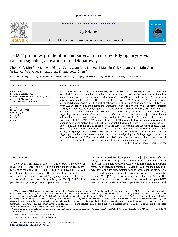摘要
B-cell activating factor of the TNF family (BAFF, also called BLyS, TALL-1, THANK, or zTNF4) has revealed its critical function in B lymphocyte proliferation and survival, as well as the pathogenesis of autoimmune disease. However, the molecular mechanisms of excess BAFF-extended aggressive B lymphocytes have not been completely defined. Here we show that excessive hsBAFF-elevated [Ca2+](i) activated mammalian target of rapamycin (mTOR) signaling pathway, leading to proliferation and survival in B lymphocytes. This is supported by the findings that intracellular Ca2+ chelator (BAPTA/AM) or mTOR inhibitor (rapamycin) abolished the events. Sequentially, we observed that preventing [Ca2+](i) elevation using EGTA or 2-APB dramatically inhibited hsBAFF activation of mTOR signaling, as well as cell growth and survival, suggesting that hsBAFF-induced extracellular Ca2+ influx and ER Ca2+ release elevates [Ca2+](i) contributing to B lymphocyte proliferation and survival via activation of mTOR signaling. Further, we noticed that pretreatment with BAPTA/AM, EGTA or 2-APB blocked hsBAFF-increased phosphorylation of calcium/calmodulin-dependent protein kinase II (CaMKII), and inhibiting CaMKII with KN93 attenuated hsBAFF-activated mTOR signaling, as well as cell growth and survival, revealing that the effects of hsBAFF-elevated [Ca2+](i) on mTOR signaling as well as proliferation and survival in B lymphocytes is through stimulating phosphorylation of CaMKII. The results indicate that hsBAFF activates mTOR pathway triggering B lymphocyte proliferation and survival by calcium signaling. Our findings suggest that manipulation of intracellular Ca2+ level or CaMKII and mTOR activity may be exploited for the prevention of excessive BAFF-induced aggressive B lymphocyte disorders and autoimmune diseases.
- 出版日期2013-5
- 单位南京师范大学
